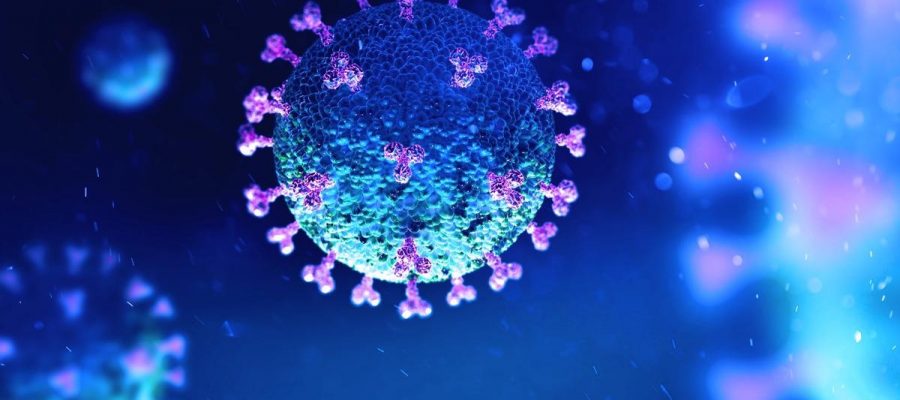A recent study posted to the bioRxiv* preprint server reported an epitope with high potency and breadth and demonstrated that a therapeutic antibody directed at this site neutralizes all severe acute respiratory syndrome coronavirus-2 (SARS-CoV-2) variants.

Study: A broad and potent neutralization epitope in SARS-related coronaviruses. Image Credit: Andrii Vodolazhskyi/Shutterstock
Currently available vaccines against SARS-CoV-2 are based on the ancestral strain of the virus, and they confer protective immune responses, lower the incidence of infection, and reduce disease severity. Several SARS-CoV-2 variants of concern (VOCs) have emerged to date and some of these variants, particularly the Omicron VOC, are resistant to the neutralizing antibodies (nAbs) elicited by existing vaccines.
Vaccines that are highly effective against SARS-CoV-2 VOCs may also potentially offer broad immunity against emergent variants in the future. Most potent nAbs are directed at the receptor-binding site (RBS) of SARS-CoV-2 spike (S) protein, which is mutated in the VOCs, reducing binding and neutralization by nAbs.
The study and findings
In the present study, researchers identified a vulnerable site on the S protein’s receptor-binding domain (RBD), that is targeted by a few antibodies. They elucidated the neutralization potential of ADG20, a monoclonal antibody developed previously by some authors of this study. ADG20 is a successor of ADG-2, a broad and potent antibody, with an extended half-life and a few changes in the amino acid residues in the fragment crystallizable (Fc) region. Both mAbs have high neutralization potential against a broad range of SARS-related coronavirus (CoV), including SARS-CoV-1, SARS-CoV-2, SHC014, and WIV-1.
The crystal structure of antigen-binding fragment (Fab) of ADG20 complexed with the S-RBD of SARS-CoV-2 was determined at 2.75 Å resolution. The authors observed overlapping of ADG20 epitope with the RBS that could hinder RBD–angiotensin-converting enzyme 2 (ACE2) binding. Generally, the residues of the ADG20 epitope are conserved across SARS-CoV-2 and its VOCs and other SARS-related CoVs. Unlike other nAbs, all epitopes of ADG20 except N501Y are conserved across Alpha, Beta, Gamma, and Delta VOCs. Interestingly, while 14 of 18 existing mAbs tested individually or in cocktail pairs showed no effective neutralization against the SARS-CoV-2 Omicron variant, ADG20 demonstrated neutralizing activity against Omicron, albeit with a 100-fold reduction relative to the ancestral virus.
Next, the research team mapped all VOC mutations onto RBD epitope classes to study the differential binding and neutralization effects of ADG20 relative to other RBD antibodies. Alpha, Beta, Gamma, and Delta VOCs contained only five mutated sites – K417, L452, T478, E484, and N501, in the RBD. Contrastingly, the Omicron VOC comprised 15 mutated sites in its RBD, of which eight are directly involved in ACE2 binding. A backbone shift away from the paratope of ADG20 was induced by Omicron mutations like S371L, S273P, and S375F, which reduced neutralization. Additionally, four Omicron mutations (G496S, Q498R, N501Y, and Y505H) were present in the ADG20 epitope with minimal impact on neutralization.
RBD-targeting antibodies were classified into six sites – RBS-A, RBS-B, RBS-C, RBS-D, CR3022, and S309. Notably, broad and potent antibodies like ADG20, S2X259, and DH1047 target one particular epitope extending from one end of the RBS into the highly conserved CR3022 site. These antibodies were tested against SARS-CoV-2 VOCs and other CoVs like SARS-CoV-1, WIV1, and pang17 and exhibited high to moderate potency. This epitope is infrequently targeted by antibodies elicited against SARS-CoV-2. S2X259 and ADG20 and, unlike other antibodies, demonstrated neutralization activity against the Omicron VOC targeting a site on the RBD covering the RBS-D region and CR3022 sites.
While DH1047 neutralized Alpha, Beta, Gamma and Delta VOCs, and other CoVs, it failed to neutralize the Omicron variant, even when the highest antibody concentration was used. The researchers revealed that antibodies like ADG20 work in two ways: first, targeting RBS and competing for receptor binding with exceptional potency, and second, targeting the CR3022 site, which is associated with breadth (broad-spectrum) of neutralization potency against SARS-CoV-2 VOCs and SARS-related CoVs.
Conclusions
The fast-spreading SARS-CoV-2 Omicron variant reportedly has the highest immune-escape features and is resistant to currently authorized mAbs. The study findings showed that while sotrovimab’s neutralization potency against Omicron pseudovirus decreased by 3–10-fold, ADG20 and ADG-2 exhibited a 40–100-fold reduction.
Nonetheless, when authentic viruses were used, the neutralization of Omicron by ADG20 was reduced 20-fold compared to the Delta VOC, and it was observed as the most potent among the tested antibodies. To summarize the findings, the authors have identified an epitope extending from the highly variable RBS into the conserved CR3022 site, conferring high potency and breadth of neutralization. Hence, it can be a desirable therapeutic target for antibodies and universal vaccine design.
*Important notice
bioRxiv publishes preliminary scientific reports that are not peer-reviewed and, therefore, should not be regarded as conclusive, guide clinical practice/health-related behavior, or treated as established information.
- Meng Yuan, et al. (2022). A broad and potent neutralization epitope in SARS-related coronaviruses. bioRxiv. doi: https://doi.org/10.1101/2022.03.13.484037 https://www.biorxiv.org/content/10.1101/2022.03.13.484037v1
Posted in: Medical Research News | Medical Condition News | Disease/Infection News
Tags: ACE2, Amino Acid, Angiotensin, Angiotensin-Converting Enzyme 2, Antibodies, Antibody, Antigen, Coronavirus, Coronavirus Disease COVID-19, Enzyme, immunity, Monoclonal Antibody, Omicron, Protein, Pseudovirus, Receptor, Research, Respiratory, SARS, SARS-CoV-2, Severe Acute Respiratory, Severe Acute Respiratory Syndrome, Sotrovimab, Syndrome, Vaccine, Virus

Written by
Tarun Sai Lomte
Tarun is a writer based in Hyderabad, India. He has a Master’s degree in Biotechnology from the University of Hyderabad and is enthusiastic about scientific research. He enjoys reading research papers and literature reviews and is passionate about writing.
Source: Read Full Article
